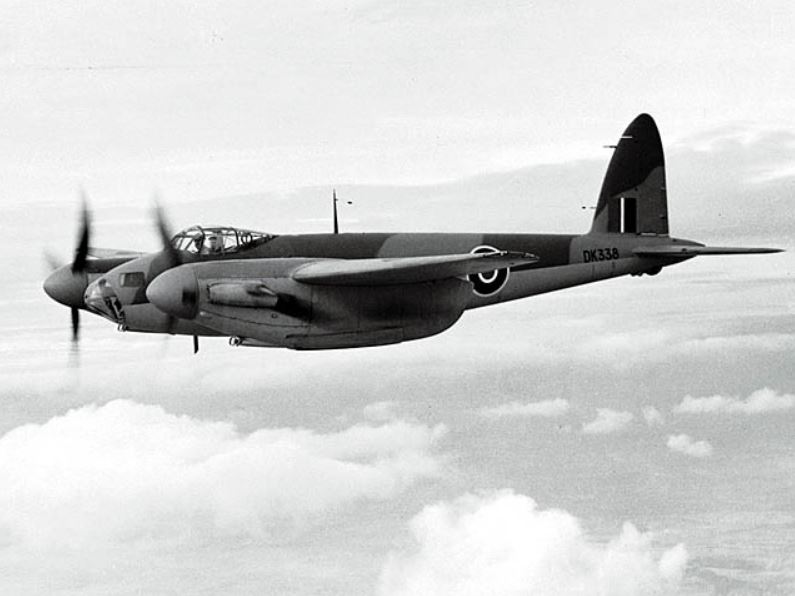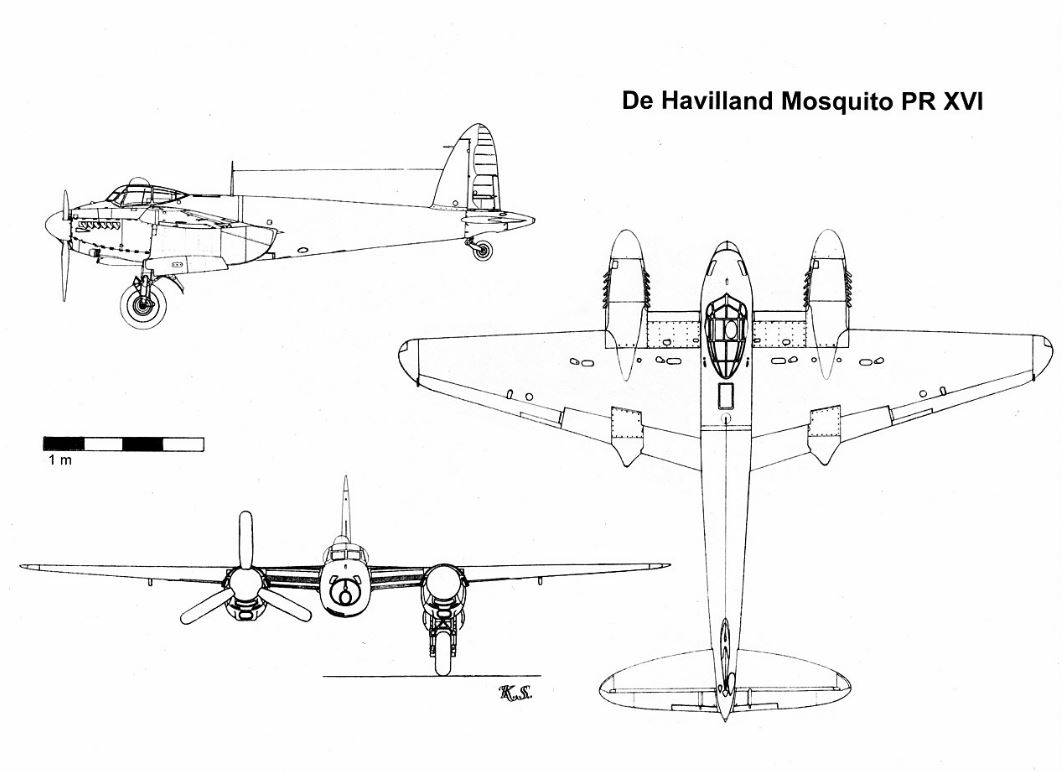Difference between revisions of "De Havilland Mosquito"
From Our Contribution
| (2 intermediate revisions by the same user not shown) | |||
| Line 12: | Line 12: | ||
| aircraftprimaryusers = RAF;RCAF; RAAF; USAF | | aircraftprimaryusers = RAF;RCAF; RAAF; USAF | ||
| aircraftinservice = 1941 | | aircraftinservice = 1941 | ||
| − | | aircraftoutofservice = | + | | aircraftoutofservice = May 1963 |
}} | }} | ||
==Remarks== | ==Remarks== | ||
| − | Unusual in that the plane was constructed from composite wood. The first prototype flew on 25 Nov 1940, with official trials commencing 19 Feb 1941. Development was delayed when de Havilland were ordered to stop work on it to concentrate on other work on their books. However, development recommenced and during trials it demonstrated that it had a much higher speed than the Supermarine Spitfire. | + | Unusual in that the plane was constructed from composite wood and designed initially to be an unarmed twin engine bomber. The first prototype flew on 25 Nov 1940, with official trials commencing 19 Feb 1941. Development was delayed when de Havilland were ordered to stop work on it to concentrate on other work on their books. However, development recommenced and during trials it demonstrated that it had a much higher speed than the Supermarine Spitfire. Mass production was authorised on 21 Jun 1941 for 19 photo reconnaissance aircraft, 176 fighters, and 50 bomber versions. Within 6 months 1,378 variants had been ordered, with another 400 to be built in Canada. The first Mosquito to fly operationally did so on 19 Sep 1941. |
| + | The Mosquito flew with the Royal Air Force (RAF) and other air forces in the European, Mediterranean and Italian theatres. The Mosquito was also operated by the RAF in the Southeast Asian theatre and by the Royal Australian Air Force based in the Dutch East Indies and Borneo during the Pacific War. An important role for the Mosquito was its use as Pathfinders to mark the targets for the main force bombers that followed. It also carried out a range of diversionary raids to pull German defences away from the main raids of the day. | ||
| + | |||
| + | |||
| + | In 1947 and 1948, surplus Canadian Mosquitoes ( up to 180 of them) flew with the Chinese Nationalist Army in the civil way against the communists. When the communists won control of the mainland, the mosquitoes were moved to Formosa where they carried out anti-shipping missions. | ||
==General characteristics== | ==General characteristics== | ||
| Line 36: | Line 40: | ||
*Bombs:1,800 kg | *Bombs:1,800 kg | ||
| − | ===Crew | + | ==Aircrew== |
| + | ===[[No. 8 (Coastal) Operational Training Unit RAF]]=== | ||
| + | * † [[Alan Wesley Hain]] | ||
| + | |||
| + | ==Ground Crew== | ||
| − | === | + | ===[[No. 87 Squadron RAAF]]=== |
*[[Kevin David Anderson]] 18 Jan 1945- Feb 1946 | *[[Kevin David Anderson]] 18 Jan 1945- Feb 1946 | ||
[[category:Aircraft]] | [[category:Aircraft]] | ||
Latest revision as of 00:56, 20 June 2022
Contents
Remarks
Unusual in that the plane was constructed from composite wood and designed initially to be an unarmed twin engine bomber. The first prototype flew on 25 Nov 1940, with official trials commencing 19 Feb 1941. Development was delayed when de Havilland were ordered to stop work on it to concentrate on other work on their books. However, development recommenced and during trials it demonstrated that it had a much higher speed than the Supermarine Spitfire. Mass production was authorised on 21 Jun 1941 for 19 photo reconnaissance aircraft, 176 fighters, and 50 bomber versions. Within 6 months 1,378 variants had been ordered, with another 400 to be built in Canada. The first Mosquito to fly operationally did so on 19 Sep 1941.
The Mosquito flew with the Royal Air Force (RAF) and other air forces in the European, Mediterranean and Italian theatres. The Mosquito was also operated by the RAF in the Southeast Asian theatre and by the Royal Australian Air Force based in the Dutch East Indies and Borneo during the Pacific War. An important role for the Mosquito was its use as Pathfinders to mark the targets for the main force bombers that followed. It also carried out a range of diversionary raids to pull German defences away from the main raids of the day.
In 1947 and 1948, surplus Canadian Mosquitoes ( up to 180 of them) flew with the Chinese Nationalist Army in the civil way against the communists. When the communists won control of the mainland, the mosquitoes were moved to Formosa where they carried out anti-shipping missions.
General characteristics
- Crew: Two Pilot, bombardier/navigator
- Length: 13.56 m
- Wingspan: 16.51 m
- Height: 5.31 m
- Empty weight: 6,486 kg
- Max takeoff weight: 11,340 kg
- Powerplant: 2 x Rolls Royce Merlin piston engines
- Maximum speed: 668 Km/h at 8,500 m
- Range: 2,100 km
- Service ceiling: 11,000 m
- Armament
- Guns:
- Bombs:1,800 kg
Aircrew
No. 8 (Coastal) Operational Training Unit RAF
Ground Crew
No. 87 Squadron RAAF
- Kevin David Anderson 18 Jan 1945- Feb 1946

